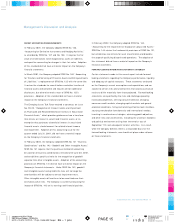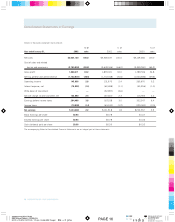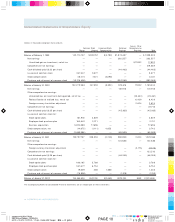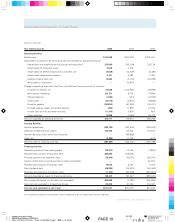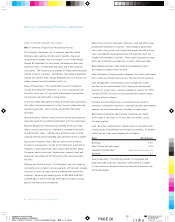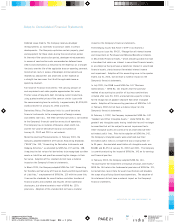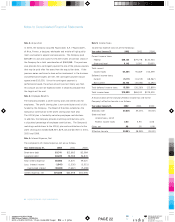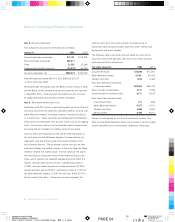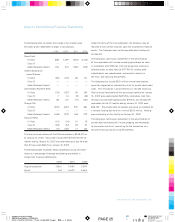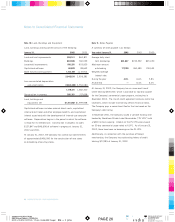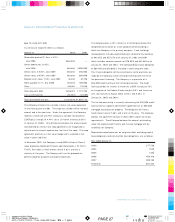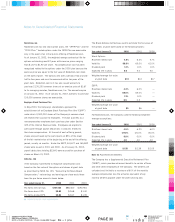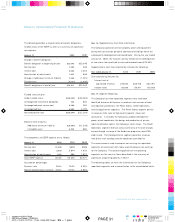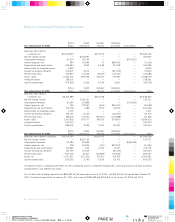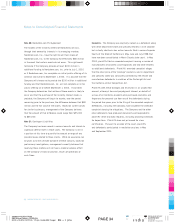Nordstrom 2001 Annual Report Download - page 26
Download and view the complete annual report
Please find page 26 of the 2001 Nordstrom annual report below. You can navigate through the pages in the report by either clicking on the pages listed below, or by using the keyword search tool below to find specific information within the annual report.
Blk + 1 pms PAGE 24 pms
550
Cyan Mag Yelo Blk
20200324 NORDSTROM
2001 Annual Report • VERSION
8.375 x 10.875 • SCITEX • 175 lpi • Kodak 80# Cougar
Notes to Consolidated Financial Statements
24 NORDSTROM INC. AND SUBSIDIARIES
Note 8: Accounts Receivable
The components of accounts receivable are as follows:
January 31, 2002 2001
Unrestricted trade receivables $73,157 $716,218
Restricted trade receivables 628,271 —
Other 21,325 22,266
Allowance for doubtful accounts (24,278) (16,531)
Accounts receivable, net $698,475 $721,953
Bad debt expense totaled $34,750, $20,368 and $11,707
in 2001, 2000 and 1999.
Restricted trade receivables back the $300 million of Class A notes
and the $200 million variable funding note issued by the Company
in November 2001. Other accounts receivable consists primarily
of vendor receivables and cosmetic rebates receivable.
Note 9: Receivable-backed Securities
Nordstrom has $200 million in outstanding debt securities (Class A)
and holds securities that represent undivided interests (Class B and
Seller Retained Interest) or residual interests (Interest Only Strip)
in a master trust. These securities are collateralized by Nordstrom
VISA credit card receivables that are sold to the trust on an ongoing
basis. The carrying amounts of the retained interests approximate
fair value and are included in customer accounts receivable.
Gains or losses are recognized on the sale of VISA receivables to
the trust based on the difference between the face value of the
receivables sold and the fair value of the assets created in the
securitization process. The receivables sold to the trust are then
allocated between the various interests in the trust based on those
interests’ relative fair market value. The fair values of the assets
are calculated as the present value of their expected future cash
flows, which assumes the weighted average remaining life of 2.4
months, average credit losses of 7.41%, average gross yield of
17.48%, average interest expense on issued securities of 2.38%,
average payment rate of 22.04%, and discount rates of 7.75% for
the Seller Retained Interest, 13.62% for the Class B and 25.35%
for the Interest Only Strip. These discount rates represent the
volatility and risk of the assets and are calculated using an
established formula that considers both the current interest rate
environment and credit spreads.
The following table summarizes the estimated fair value of the
securities held by the Company and certain cash flows received
from and paid to the master trust.
Year ended January 31, 2002 2001
Class B Certificate $10,849 $11,000
Seller Retained Interest 47,102 42,052
Interest Only Strip 1,335 3,464
Principal collections reinvested
in new receivables 669,582 485,422
Gains on sales of receivables 3,147 5,356
Income earned on retained assets 6,711 9,035
Cash flows from retained assets:
Class B Certificate 715 684
Seller Retained Interest 6,217 4,411
Interest Only Strip 4,984 4,955
Servicing Fees 8,440 8,121
Interest income earned on the Class B certificate, Interest Only
Strip and the Seller Retained Interest are included in service charge
income and other on the consolidated statements of earnings.



